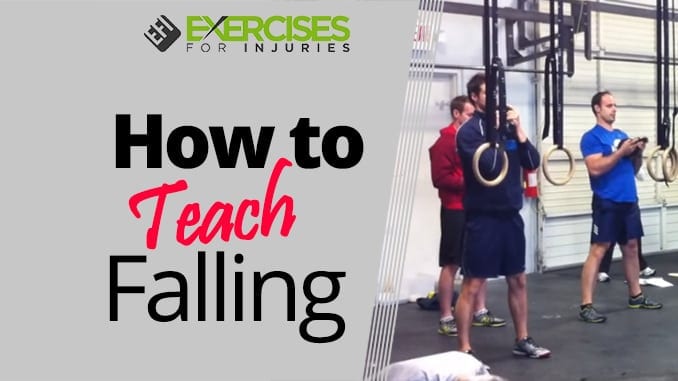
Tumbling and falling are the most feared skills youth athletes will learn. In falling, your athletes will know how to react once they lose their balance. Athletes will learn how to fall safely rather than injure themselves in tumbling.
Both of these skills require trust between the coach and athlete, which is why the coach needs to teach them correctly from the beginning to be effective. This article will teach you how to teach tumbling or falling properly so that your athlete remains safe while learning these scary skills.
The comment on Day 1 about how to teach falling or tumbling helped his athletes a lot regarding injuries.
People on EFI also wanted to know more:

Dan talked about how 90% of American males have shoulder injuries because all the male sports in the USA involve throwing (most American males will play football, baseball, and basketball.)
I asked Dan if he could give us some resources regarding teaching falling.
When athletes fall, they instinctively put out their hands to shield themselves, but you do not need to do this. Your body will thank you if you know how to fall or tumble properly because it will prevent injuries.
Here is a little bit of the Dan John experience:
How to Teach Falling Safely
One of the most important things to remember when teaching your athletes how to fall is to stay positive. You can easily get caught up in the fact that you are working with children who are new to the sport and will more than likely fall during their first few practices.
When teaching your athletes how to fall, make sure you coach them while they are falling. This means they are in the air and falling toward the ground. This means you need to be extra careful when correcting your athletes because they will start to lose confidence if they think you are getting frustrated with them.
Another way to ensure you are teaching them to fall correctly is to go through the falling progressions. You go through these progressions with your athlete while falling to ensure they do not get hurt while learning how to fall. This way, they will be able to feel what you want them to do, and you can correct them immediately if they are doing something wrong.
Here are his recommendations.
1. Look at Judo
Falling and tumbling are required in the sport of Judo. You can learn from this sport or learn from someone that is a specialist in this sport.
2. Frank Shamrock’s Book
Frank has a book called Lions Den. The book contains a chapter on tumbling that is a great resource.
3. 1936 Book
A physical education book from 1936 called Tumbling In A High School Setting (or something like that) exists.
It is an amazing book on tumbling, and more of us can not do what we do in this book.
(Please note, I have tried to search online for the above. If you do find them, let me know.)
Okay, a few more nuggets:
- 3GH – Go Heavy, Go Hard, Go Home
- “You are sitting on your gold mine.” (Your gluteus.)
- Dan’s comment on different exercises. “Some are good.” doing some of everything is great, but only doing one is not good.
- Use a heart rate monitor to see how your clients react to exercises.
- Get people on and off the floor. You will be amazed at how much it will help. He brings up a great point. We moved people off the mat onto machines. Then we moved from sitting to only doing things standing. Great comment on getting people on the floor and up and down from the floor.
- You lose rotary stability and thoracic mobility when you get off a plane. When you get off the plane, work on getting it back.
That were a few highlights from the two days. There was a lot more, but these were a few things that I got and learned. I hope this helped out.
Take care.
Rick Kaselj, MS

